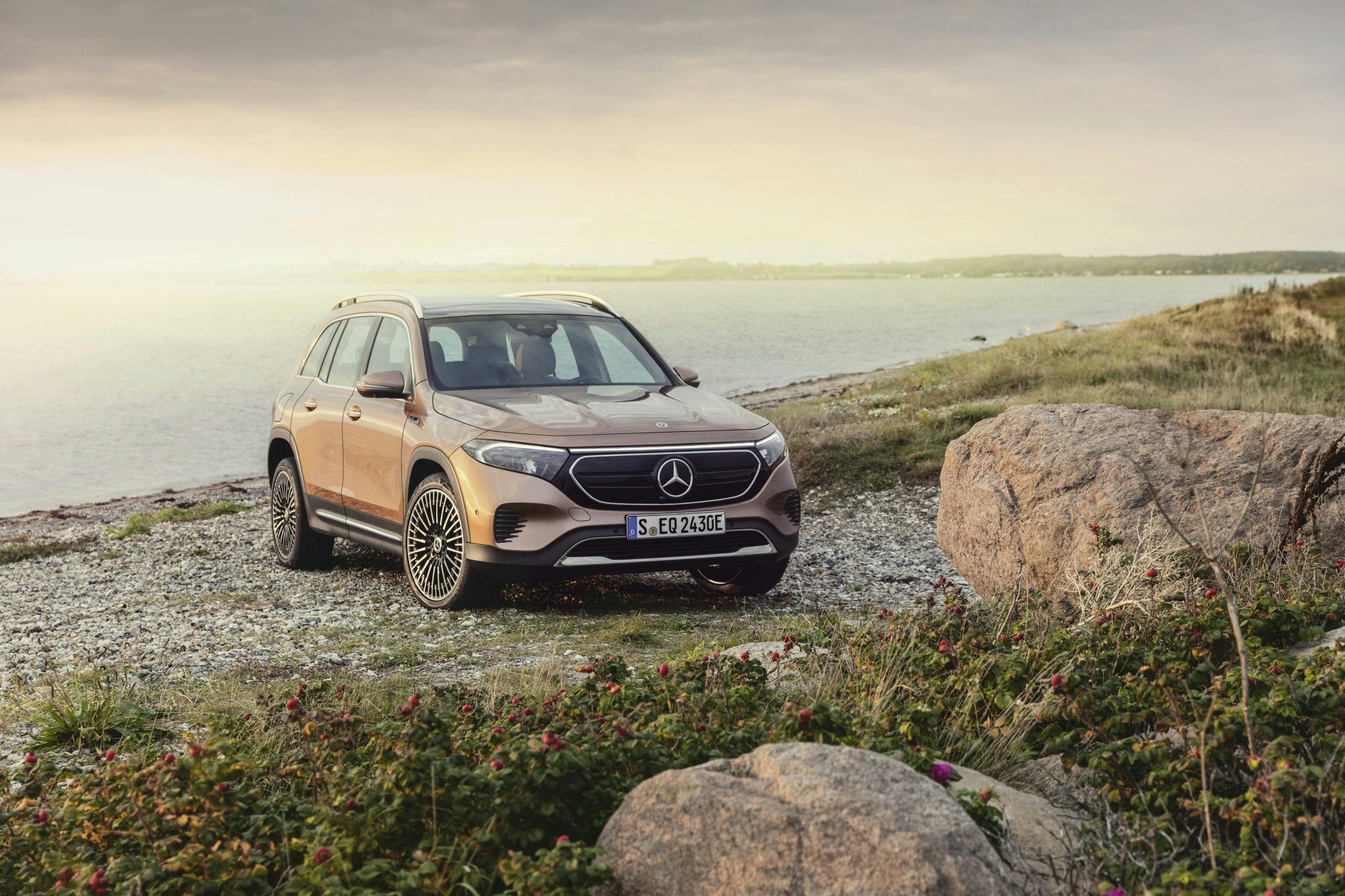Pricing for the 2022 Mercedes-Benz EQB has been announced with the base EQB 300 starting at $56,800. The EQB 350, on the other hand, checks in at $60,350.
Only two trims will be offered to start with the base one being the Exclusive. This gets you a long list of standard equipment including unique LED exterior lighting, the MBUX interface with two 10.25-inch displays, built-in navigation, lane-keeping assist, keyless entry/start, wireless charging, blind-spot monitoring, and automatic emergency braking. In addition to the standard five-seat configuration, the EQB is available with a third row, increasing capacity to seven.
At the top end of the EQB lineup is the Pinnacle trim. Building on the Exclusive trim, this adds extra goodies like a panoramic sunroof, a Burmester audio system, and a surround-view camera. Available options include a head-up display, heated, ventilated, and massaging front multi-contour seats, and the Driver Assistance package, which contains adaptive cruise control. There’s also an AMG Line package that gives you a sportier look. Pricing for the Pinnacle trim starts at $59,350 for the EQB 300 and $61,400 for the EQB 350.
Both vehicles use a 66.5-kWh battery pack and feature a dual-motor layout and AWD standard. The EQB 300 makes 225 hp and 288 lb-ft of torque. If you’re looking for more power, the EQB 350 is good for 288 hp and 384 lb-ft. Mercedes hasn’t released any range figures yet but considering the EQB is rated at around 419 km or 260 miles on the WLTP cycle, it could slot in at around 230 miles on the more conservative EPA cycle. DC charging from 10 to 80% takes 31 minutes at peak rates of up to 110 kW. Using a level 2 AC charger, a full charge requires over 11 hours.
The key competitors to the Mercedes-Benz EQB are the Volvo XC40 Recharge, the Audi Q4 e-tron, and the Genesis GV60. In the charging department, every single rival has a higher peak rate than the Mercedes. The Audi and Volvo are good for 135 kW and 150 kW respectively while the Genesis is rated for 235 kW thanks to its 800-volt charging architecture. That means you’re spending less time plugged in and more time on the road if you have either the Volvo, Audi, or Genesis. It also helps that they have larger battery packs. The Q4 e-tron uses an 82-kWh unit, which is the biggest of the bunch. Volvo and Genesis aren’t far behind with a 75- and 77.4-kWh battery respectively.
In terms of pricing, the EQB sits in the middle and is similarly priced to the GV60 Advanced and XC40 Recharge Ultimate at the top end. The entry-level models are around the same price as the mid-level Q4 e-tron Premium Plus and XC40 Recharge Plus since it has more standard equipment. Currently, the only model that’s more expensive is the GV60 Performance, which checks in closer to $70,000 due to the additional go-fast goodies it gets like adaptive suspension, 21-inch wheels, Monobloc front brakes, and a limited-slip differential.
On sale by this summer, the 2022 Mercedes-Benz EQB will slot below two upcoming fully electric SUVs: the recently revealed flagship EQS SUV and the mid-size EQE SUV. Both of those vehicles share the EVA2 architecture with their sedan siblings. The EQB, on the other hand, uses a convergence platform that also underpins the European-market EQA, and the gas-powered GLA- and GLB-Class.

